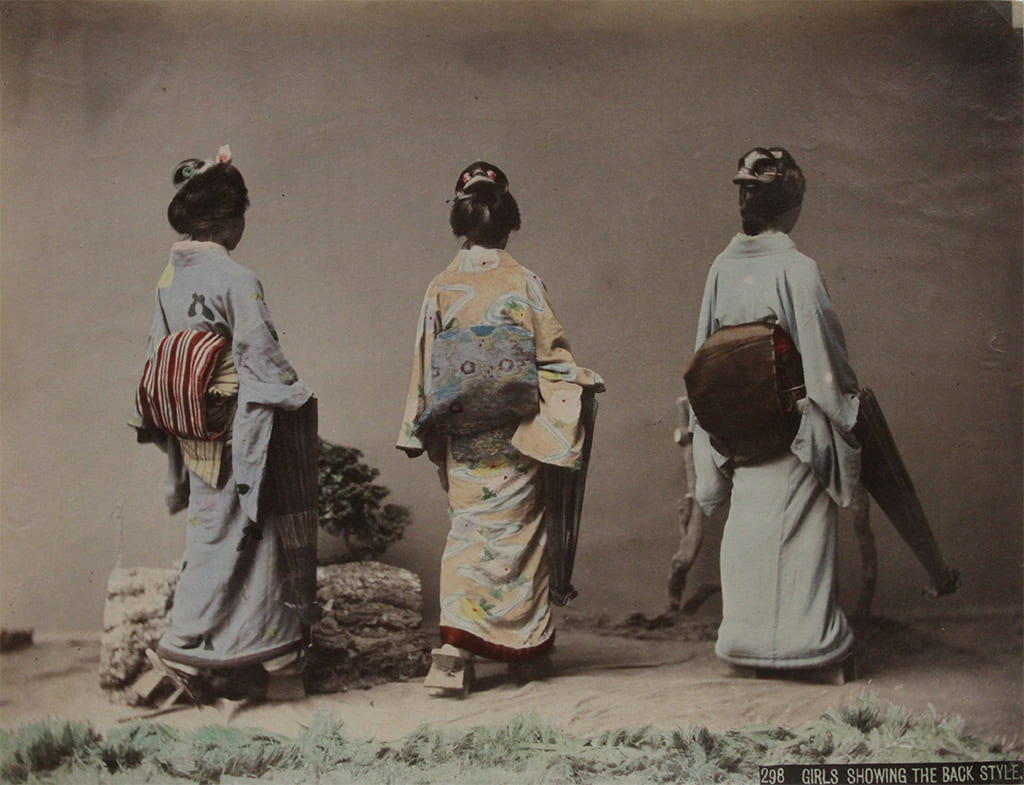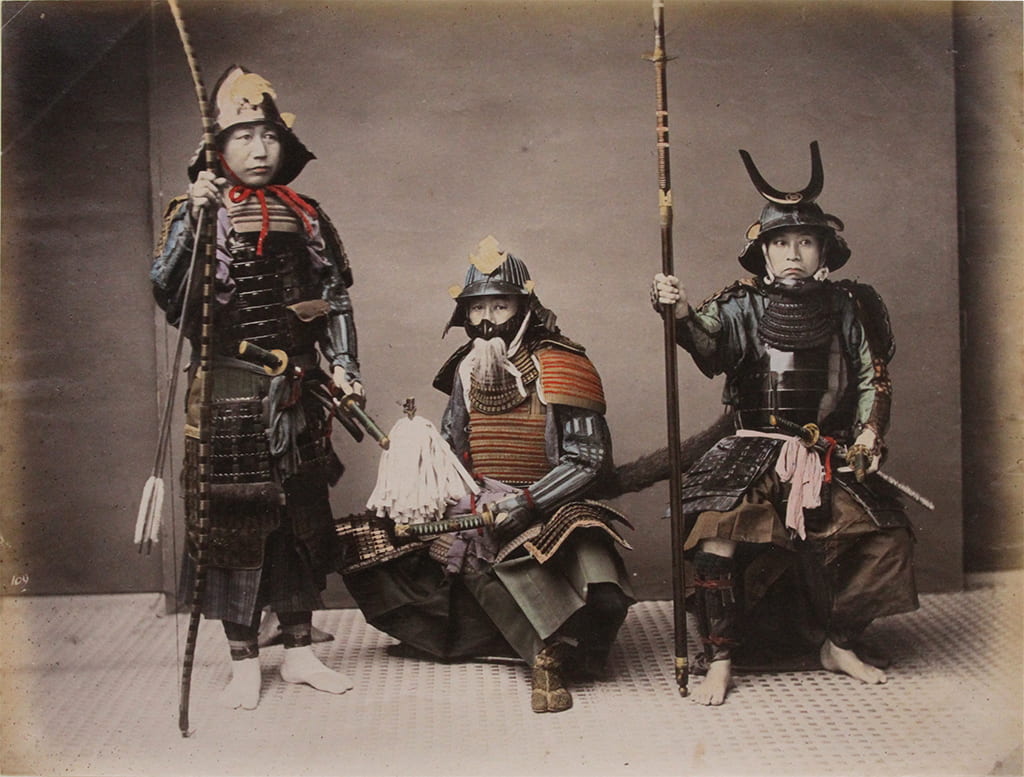Trained by European photographers in Japan, the Japanese photographer Kusakabe Kimbei (1831–1934) ran one of the most successful commercial studios in Yokohama. He excelled at depicting the old-fashioned Japan that appealed to foreign customers. In Reading in Bed, a woman rests on a colorful futon mat surrounded by tokens of tradition, including an andon paper lantern, a hakomakura, or high pillow, and a paneled screen draped with kimonos. In Japanese Girls Playing Game, Kusakabe depicts eight women enjoying Konkonchiki, a popular pastime since the Edo period. Its central player tries to snatch a cup through a loosened knot before other players tighten the cord around her hand.[23] Scenes of beautiful women playing games and reading harked back to the customary subject matter of ukiyo paintings and prints.[24]
Kusakabe placed great emphasis on traditional costumes and bodily adornment.[25] Girls Showing the Back Style depicts three women turning their backs to the viewer to display their coiffures and the embroidered obi sashes securing their kimonos. The picture gives little hint that Meiji women had begun to adopt foreign styles. Ironically, most of Kusakabe’s sitters were geishas, professional beauties known for embracing the latest fashions like Western-style bonnets and bustles. Geishas were also more comfortable than other Japanese women with having their pictures taken and commercially distributed.[26] Women and geishas in particular were among the most ubiquitous subjects of Japanese souvenir photography. They reinforced an American stereotype of Japanese culture as feminine, embodying beauty, delicacy, and submissiveness, in sharp contrast to the masculine vigor associated with late nineteenth-century America.
Another popular subject for souvenir photography in Japan was the samurai. In Three Samurais Kusakabe depicts men wearing the ceremonial armor of Japan’s elite military class. Each man rests his hand on a katana (long sword) slung at the hip; the man on the left grips a bow and arrows; and the man on the right holds a naginata, or pole-like weapon tipped with a blade. Their erect postures and alert gazes convey the warrior ideals of physical and moral courage prized by the samurai. Kusakabe’s models may only be actors in costume or possibly former samurai, however, since the restoration of imperial rule during the Meiji period effectively dismantled the feudal caste system.[27] In 1876, a Meiji edict prohibited the samurai from wearing swords. Economic losses forced many samurai to sell their armor and other treasures to Western collectors. Ignoring the disempowerment of the samurai class, Kusakabe pictures feudal Japanese society intact, giving his foreign audience the misleading impression that little had changed in modern Japan.
Image credits:
Kusakabe Kimbei (Japanese, 1841–1934), Reading in Bed, n.d; (Konkonchiki) Japanese Girls Playing Game, c. 1880s; Girls Showing the Back Style, c. 1880s; and Three Samurais, n.d. Hand-tinted albumen prints, 7 15/16 x 10 1/16 in., 7 7/8 x 10 3/8 in., 7 13/16 x 10 3/8 in., and 7 15/16 x 10 1/2 in. Mildred Lane Kemper Art Museum, Washington University in St. Louis. Gifts of Laurie Wilson, Robert Frerck, and family, 2015.



